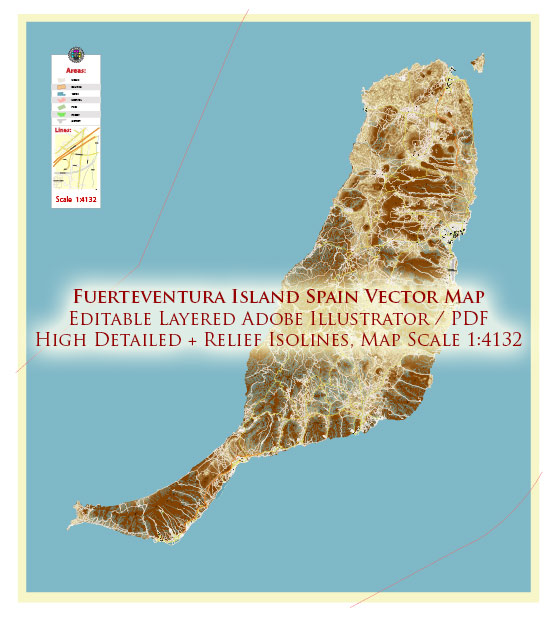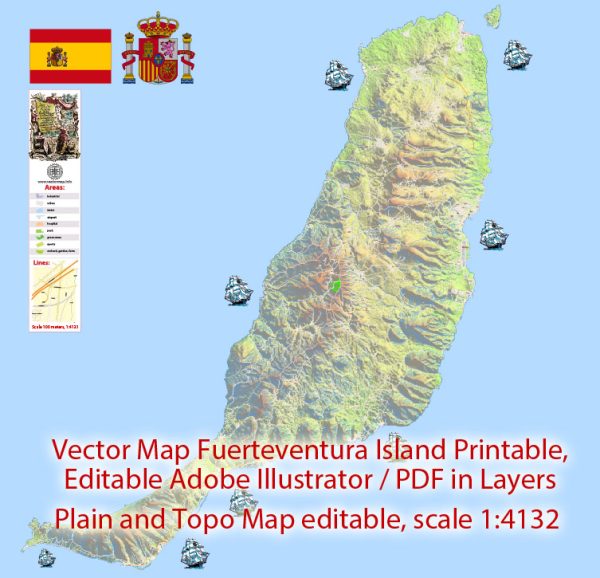Fuerteventura, one of the Canary Islands, Spain, has a rich history of urban development that spans centuries. Here’s a brief overview:
- Indigenous Guanche Period (before 1402): Before the arrival of the Europeans, the Guanches, indigenous people of the Canary Islands, inhabited Fuerteventura. Their settlements were primarily rural, and they lived in caves and simple stone structures. The Guanches had a distinctive culture, and their influence can still be seen in some of the island’s traditions.
- European Exploration and Conquest (15th Century): In the early 15th century, European explorers, notably Jean de Béthencourt and Gadifer de la Salle, began the conquest of the Canary Islands. The Castilians eventually claimed Fuerteventura in 1402. The island’s main town, Betancuria, was founded in 1405 by Jean de Béthencourt and became the capital of the island.
- Pirate Attacks and Decline (16th-17th Centuries): During the 16th and 17th centuries, Fuerteventura faced numerous pirate attacks, leading to a decline in the population and economic activity. Many residents abandoned the coastal areas for safer inland locations.
- Economic Revival and Coastal Settlements (18th Century): In the 18th century, the economy of Fuerteventura began to recover, primarily driven by agriculture and trade. Coastal settlements and ports, such as Puerto del Rosario (formerly Puerto de Cabras), started to gain importance. Puerto del Rosario eventually became the island’s capital in the 19th century.
- Modernization and Tourism (20th Century): The 20th century saw significant changes in Fuerteventura’s urban development. With the rise of tourism in the Canary Islands, especially during the latter half of the century, there was a surge in infrastructure development, including the construction of hotels, resorts, and amenities to accommodate visitors.
- Contemporary Development (21st Century): In recent years, Fuerteventura has continued to evolve as a tourist destination. The island has experienced further urbanization, with the development of modern facilities, residential areas, and improvements in transportation infrastructure.
Today, Fuerteventura maintains a delicate balance between preserving its natural beauty and catering to the needs of a growing tourism industry. The historic architecture of towns like Betancuria reflects the island’s past, while modern developments in places like Puerto del Rosario and other coastal areas showcase its adaptability to contemporary demands.



 Author: Kirill Shrayber, Ph.D.
Author: Kirill Shrayber, Ph.D.